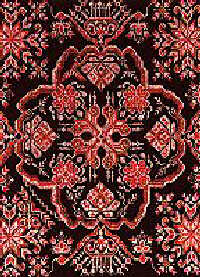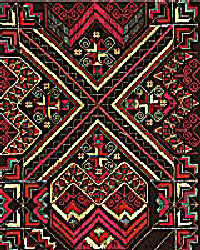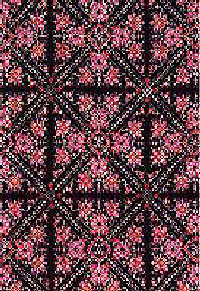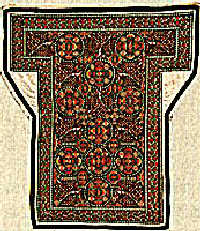
Before storing the cross-stitched works, make sure they are clean and dry. Avoid storing fabrics for any length of time in polythene bags since the static electricity created by polythene attracts dirt and dust which will sully the fabric. Sealed polythene bags also prevent natural fibers, such as cotton and linen, from "breathing," which can result in mildew and eventually weaken or rot the fibers. Instead, store small items laid flat, and larger ones rolled around an acid-free cardboard tube protected by layers of white, acid-free tissue paper. For items too large to roll up, fold loosely between layers of white tissue paper, making sure that each fold is padded with tissue. Store all of the items in their own clean fabric bags in drawers, cupboards or other dark, dry and moth-free places. Small fabric bags of dried lavender add a sweet scent and help prevent moths.
 Essential tips and secrets
Essential tips and secrets
 Change needle sizes according to fabric count
Change needle sizes according to fabric count
Remember: If you change the size of the fabric from the pattern specifications, you may also need to change the size of the needle. Lower-count fabrics require larger needles than higher-count fabrics. The needle should pass between the threads (or through the holes of Aida) easily, without "hanging up." However, a smidgen of resistance is acceptable since a needle that is too small will slide through the fabric too quickly, making it hard to maintain an even tension for your stitches.
 Soften large areas of stitches with half-crosses
Soften large areas of stitches with half-crosses
 Even if a pattern calls for whole cross-stitches in a large landscape design area, like grass, sky or water, you can speed up the process and soften the appearance by using half cross-stitches instead.
Even if a pattern calls for whole cross-stitches in a large landscape design area, like grass, sky or water, you can speed up the process and soften the appearance by using half cross-stitches instead.
** Cover large areas of fabric with ease
Although stitching large, single-colored areas is easy, it can get boring and very time-consuming. Consider using colored fabrics to match the colors of large areas, like a sky-blue fabric for sky designs, or aqua-colored fabric for water designs. A few stitches can be added to create clouds or foam in the area for a realistic effect
 Changing the design size
Changing the design size
You can change the design size simply by changing the fabric's thread count. For a larger piece, use a lower count fabric; for a smaller piece, use fabric with a higher thread count than outlined in the pattern.
For example, a piece stitched "over two" on 28-count fabric will be the same size when worked on 14-count Aida, or over two on 28-count even-weave or linen. To make the piece slightly larger, use 10- or 11-count Aida; for a smaller finished product, try 36-count, stitched "over two," or 18-count Aida.
 Make your projects last
Make your projects last
For a long-lasting product, use plastic cross-stitched canvas (vinyl weave) instead of perforated paper, which is made especially for cross-stitching and is very durable. Cross-stitched canvas holes are similar to those of perforated paper, as well.
 Keep your hands clean and smooth
Keep your hands clean and smooth
 Mix equal parts (1 tablespoon) of vegetable oil and sugar (do not use the superfine variety). Use this solution to wash your hands, paying particular attention to areas around the nails. Then wash your hands very thoroughly with soap and water. This process will help remove any dry skin from your hands: You won't believe how silky they feel. Use after working with silk fibers.
Mix equal parts (1 tablespoon) of vegetable oil and sugar (do not use the superfine variety). Use this solution to wash your hands, paying particular attention to areas around the nails. Then wash your hands very thoroughly with soap and water. This process will help remove any dry skin from your hands: You won't believe how silky they feel. Use after working with silk fibers.
